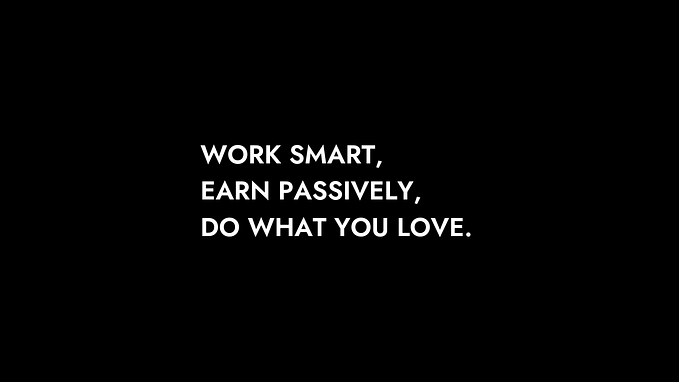Best Trading Strategy in Nifty for Beginners
One of the most helpful tactics to employ while trading options will be discussed in this article.
Many of you, I’m sure, must have tried a variety of indicators and trading methods in search of the one perfect method that will always result in profits and never cause you to lose money.
Please get in touch with me as well if someone has actually found such a method.
Just kidding, but I don’t think anyone has ever discovered a method that consistently generates profits. Regardless of the approach you take, you will inevitably lose money.
Because no one can ever foresee how the markets will behave, even the best traders constantly seek to improve their techniques because change is the only thing that never changes.
Checking the profitability ratio is something that everyone of us must do while developing a strategy.
It’s regarded an excellent ratio if your approach makes you money 70% of the time you place a trade.
To improve our chances of generating money in the market, we all need to be exceptionally good at absorbing losses and limiting them.
Let me now describe one approach I use, which is known as Bollinger Band Reversals.
My mentor — Kumar Jay — taught me this strategy. (Instagram : @tradewithkumar)
What are Bollinger Bands
John Bollinger created the Bollinger Bands, a technical analysis technique for generating oversold or overbought indications.
Bollinger Bands are made up of three lines: an upper, a lower, and a simple moving average, which serves as the middle band.
It is possible to change the upper and lower bands, which are normally +/- 2 standard deviations from a 20-day simple moving average.
When the price repeatedly approaches the upper Bollinger Band, it may be a warning that the market is overbought.
An indication of oversold conditions may be indicated if the price keeps dipping into the lower range.
What Do Bollinger Bands Tell You?
Bollinger Bands is a popular technique. Many traders hold the view that the market is more overbought or oversold the closer prices move to the upper band or the lower band, respectively.
The Squeeze
The fundamental idea behind Bollinger Bands is the “squeeze.” A squeeze occurs when the bands compress the moving average as they draw closer to one another. Traders view a squeeze as a potential sign of future rising volatility and trading opportunities. A squeeze denotes a period of low volatility.
In contrast, the likelihood of a drop in volatility and the likelihood of leaving a trade increase as the bands move farther apart. These circumstances are not buy or sell indications. The bands do not predict when the change would occur or which way the price might go.
Breakouts
90% of price movement takes place between the two bands.
Any breakout between the bands or above them is important. Many investors confuse the breakout, which is not a trading signal, for a buy or sell signal when the price touches or crosses one of the bands. Breakouts don’t reveal anything about the scope and direction of upcoming price movement.
Example of Bollinger Bands
The Bank Nifty Index’s 20-day SMA is surrounded by Bollinger Bands in the chart below, which also shows the daily price movements of the Index. Because standard deviation is a measure of volatility, the bands broaden during periods of increased volatility and contract during periods of decreased volatility.

How to use Bollinger Band Reversals
You will need to use two indicators here — Bollinger Bands and Inside Bar.
An Inside Bar is nothing but a candle close within the high and low of the previous candle. The white candle is the Inside Bar.

Bollinger Bands’ parameters are already at 20 SMA, thus there is no need to make any adjustments.
You must make the following changes to the Inside Bar settings in order to be alerted when an Inside Bar forms.

Now, you must prepare to enter the trade anytime you notice that the price is hitting either the upper or lower bands.
An Inside Bar that forms after a candle has touched the upper or lower band of the Bollinger Band will serve as the signal to enter a trade.
Examples
The Inside Candle formed as soon as the Red candle reached the lower Bollinger Band, giving us the signal to enter a reversal trade with the Red candle’s high serving as the entry point and its low serving as our stop loss.
Our initial goal should be a 1:1 ratio where we book some profits in part and then trail the stop loss back to the price at which we purchased the option to increase our winnings if the price rises higher.
The upper band would be the most visible escape point. The price reverses once it reaches the upper band, as shown in the screenshot below, allowing us to book our complete profits at this moment.
Another thing to keep in mind is that, once it reversed from the upper band, no inside candle had formed, so our guidelines did not let us to enter a trade.

Here’s another illustration, however this one triggers our Stop Loss.

Rules to follow while taking Bollinger Reversals
- This set up should be traded only in Nifty50.
- The set up should be traded only after 11am — this is because we need the markets to settle down when taking such trades and it is usually not steady from 9:15–11:15 am.
- You need to wait for a candle that touches the upper or lower Bollinger band.
- After that happens, wait for an Inside candle to decide your entry and stop loss
- The colors of the Inside Candle and the one before that doesn’t matter.
- Book half lots at 1:1 ratio and trail the rest. If you are dealing with just one lot then trail your stop loss to the cost at which you bought the option.
- Book full profits when the price touches the upper Bollinger bands or keep trailing — this is as per your wish.
Conclusion
This is one excellent illustration of how systemic trading is carried out. You adhere to a set of rules, and you won’t trade until all the requirements have been satisfied.
The most crucial factor in this situation is consistency with your trading strategy. Naturally, you may back-test this strategy yourself to increase your confidence before making actual trades.
We won’t take a trade if any of the rules are broken and will instead opt to keep our capital safe.
That’s all for this article. However, I will leave you’ll with some good trading books that you’ll must read to build your trading psychology.






